#j William fosdick
Text
Last time I was in Washington, I walked over a mile to go see HER again.

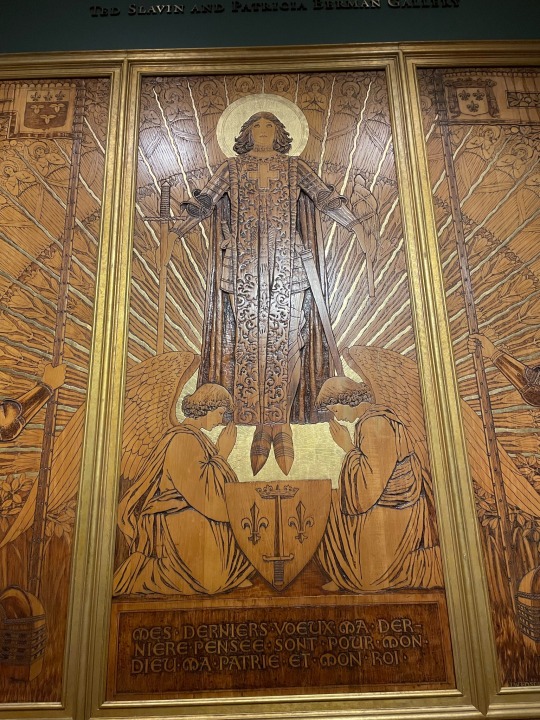
J. William Fosdick, Adoration of St. Joan of Arc, 1896, fire etched wood relief, three panels, each: 109 3⁄4 x 49 1⁄2 in. (278.8 x 125.7 cm.), Smithsonian American Art Museum, Gift of William T. Evans, 1910.9.8
1K notes
·
View notes
Photo


J. William Fosdick - The Glorification of St. Joan of Arc, 1896 (wood triptych).
Detailed images, here.
More >> 1 | 2
8 notes
·
View notes
Text

And now I know how Joan of Arc felt
Miraculous ladybug version of ‘Adoration of St.Joan of Acr’ by J. William Fosdick, because gosh those two girls are too young to have the fate of France on their shoulders
#I listened to Bigmouth Strikes Again by the Smiths the entire time working on this lol#it’s all over my tiktok fyp and is responsible for making me focus on miraculous again#this took so long but I’m really happy with it#the original art is much bigger then this and has like three parts but this is all I wanted to do#miraculous ladybug art#miraculous ladybug#marinette dupen chang#adrian agreste#chat noir#ladybug#rena rouge#Queen bee#carapace#miraculous kwamis#viperion#ryuku#bunixx#Joan of arc wouldn’t like me and that makes me sad#she’s so cool#she’s the reason we have France#the way they did her in miraculous feels really disrespectful tho#expected more miraculous art the next little while
216 notes
·
View notes
Text


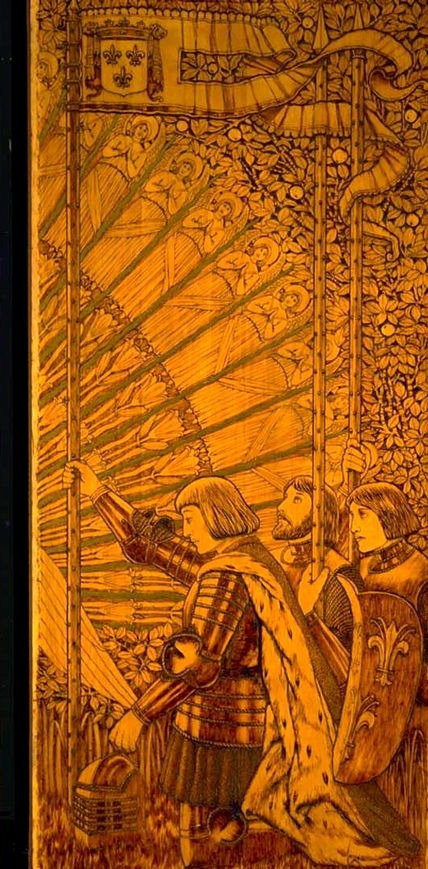
Adoration of St. Jeanne D'arc, by J. William Fosdick, 1896
#i definitely know how joan of arc felt#jeanne d'arc#joan of arc#saint joan of arc#19th century#art history#history#art nouveau#religious art#religious imagery#late 1800s#1890s
68 notes
·
View notes
Text
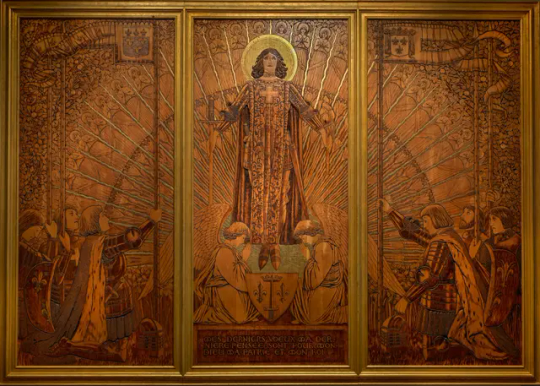
adoration of st. joan of arc by j. william fosdick (1896)
11 notes
·
View notes
Text
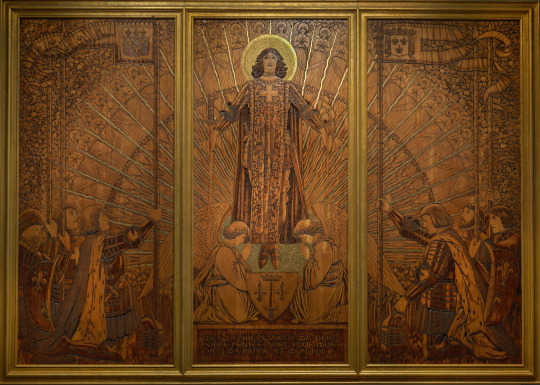
Adoration of St. Joan of Arc, 1896, J. William Fosdick.
0 notes
Photo

Adoration of St. Joan of Arc by J. William Fosdick
We rode now to the King’s lodgings, which was the Archbishop’s country palace; and he was presently ready, and we galloped off and took position at the head of the army. By this time the country-people were arriving in multitudes from every direction and massing themselves on both sides of the road to get sight of Joan—just as had been done every day since our first day’s march began. Our march now lay through the grassy plain, and those peasants made a dividing double border for that plain. They stretched right down through it, a broad belt of bright colors on each side of the road; for every peasant girl and woman in it had a white jacket on her body and a crimson skirt on the rest of her. Endless borders made of poppies and lilies stretching away in front of us—that is what it looked like. And that is the kind of lane we had been marching through all these days. Not a lane between multitudinous flowers standing upright on their stems—no, these flowers were always kneeling; kneeling, these human flowers, with their hands and faces lifted toward Joan of Arc, and the grateful tears streaming down. And all along, those closest to the road hugged her feet and kissed them and laid their wet cheeks fondly against them. I never, during all those days, saw any of either sex stand while she passed, nor any man keep his head covered. Afterward in the Great Trial these touching scenes were used as a weapon against her. She had been made an object of adoration by the people, and this was proof that she was a heretic—so claimed that unjust court.
—Mark Twain, Personal Recollections of Joan of Arc
1 note
·
View note
Photo
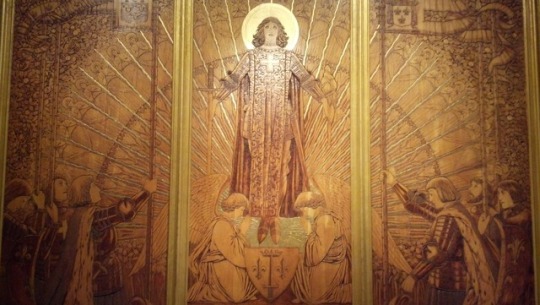
Adoration of St. Joan of Arc by J. William Fosdick
#Adoration of St. Joan of Arc#Joan of Arc#J. William Fosdick#art#this has been the background on every one of my smartphones since I took the photo almost ten years ago
100 notes
·
View notes
Text
Nuestro maravilloso Dios
sábado, 02 abr. 2022
«No es cómo comienzas, sino cómo terminas»
«Estoy seguro de que Dios, quien comenzó la buena obra en ustedes, la continuará hasta que quede completamente terminada el día que Cristo Jesús vuelva». Filipenses 1: 6, NTV
NO SUCEDE MUCHAS VECES QUE «el hombre más feliz de la tierra» se encuentre con «el más sabio de la tierra». Pero eso fue lo que, según Heródoto, sucedió hace muchos años, cuando Creso recibió la visita de Solón, el legendario legislador ateniense.
Creso fue rey de Lidia, Asia Menor, y poseía muchas riquezas. Cuenta Heródoto que un día Solón escuchó hablar de él, y decidió visitarlo. Entonces Creso aprovechó para mostrarle las riquezas de su reino, y para preguntarle quién era el hombre más feliz de la tierra. Su chasco fue grande cuando Solón le habló de Telo, un hombre pobre pero honesto, que se esforzó para brindar a sus hijos una buena educación, y que luego dio su vida por Atenas.
Ocultando su desilusión, Creso preguntó entonces a Solón quién era el segundo más feliz. De nuevo quedó chasqueado cuando Solón habló de dos jóvenes que perdieron a su padre cuando eran niños, pero que trabajaron arduamente para sostener a su madre y luego sirvieron honorablemente a Atenas.
Creso ya no pudo aguantar más.
-¿Por qué pones a esa gente pobre por encima del rey más rico del mundo?—preguntó.
—Porque no puedes decir si tu vida ha sido feliz o no hasta el final de tus días —respondió Solón--, pues no sabes qué desdicha puede despojarte de todo este esplendor.
Años después se levantó un poderoso conquistador llamado Ciro, quien destronó a Creso y lo tomó prisionero. El día de su ejecución, Creso comenzó a repetir el nombre de Solón, una y otra vez, y Ciro lo escuchó.
-¿Por qué mencionas tanto el nombre de Solón? —le preguntó Ciro.
Creso, muy arrepentido, le contó de la visita de Solón, y de sus palabras: «No puedes decir si tu vida ha sido feliz o no hasta el final...». Las palabras de Solón impresionaron profundamente a Ciro. ¿Podría ser que él también terminara sus días como Creso? Al final, decidió perdonarlo.*
¿Alguna lección para nosotros? Harry E. Fosdick la resume bien cuando escribe que «un buen comienzo jamás implica un buen final, pues las cualidades que capacitan a un hombre para comenzar no son las mismas que le permiten continuar hasta el fin» ** Dicho de otra manera, «no es cómo comienzas, sino Cómo terminas». El rey Saúl empezó bien, pero terminó mal. Saulo de Tarso comenzó mal, pero terminó bien. Todo depende de en manos de quién colocas tu vida. Si la entregas a Jesucristo, la promesa es que Aquel que comenzó en ti la buena obra, la completará.
Padre celestial, continúa trabajando en mi corazón hasta que la buena obra que comenzaste en mi quede completamente terminada.
*William J. Bennett, The Book of Virtues, Simon & Schuster, 1993, pp. 135-137.
**Citado por Norval F Pease, En esto pensad, Pacific Press, 1970, p. 75.
0 notes
Link
When protesters seize and vandalize monuments or statuary of dead persons they consider historically inconvenient or politically incorrect they never go after these nefarious, evil worthies?
Robert Morris, Alexander Hamilton, John Marshall, Henry Clay, John D. Rockefeller, J. Pierpont Morgan, Elihu Root, William Nelson Cromwell, “Colonel” Edward M. House, John W. Davis, Paul Cravath, Raymond B. Fosdick, “Colonel” Henry L. Stimpson, Walter Lippmann, John Foster and Allen Dulles, Prescott Bush, John J. McCloy, Nelson Rockefeller, C. Douglas Dillion, Dean Rusk, Robert McNamara, Walt Rostow, McGeorge and William Bundy, Henry Kissinger, Zbigniew Brzezinski, David Rockefeller, Armand Hammer, William F. Buckley Jr., Felix Rohatyn, Richard Holbrooke, or George Soros.
0 notes
Photo

J. William Fosdick - Glorification of Jeanne d'Arc (Fifth panel of a pentaptych of the life of St. Joan of Arc), circa 1915. Source
More >> 1 | 2
2 notes
·
View notes
Photo







J. William Fosdick, The Adoration of St. Joan of Arc (1896)
Fosdick made this relief to appeal to wealthy industrialists who favored richly designed interiors and uplifting art. He tapped into the fantasy of a more spiritual past, and when the screen was exhibited, it was praised for craftsmanship that rivaled a medieval masterwork.
At the turn of the twentieth century, Joan of Arc was a popular symbol in American culture. Mark Twain wrote about her in 1896, Anna Hyatt Huntington created a sculpture of the martyr for Riverside Drive in New York, and George Bernard Shaw's famous play about her was first produced on Broadway in 1923. She could be a figure from the romantic past and an emblem of the "New Woman" in the modern world. Joan may have died for king and country—as the legend at the bottom of the screen records—but her symbolic power as a woman who took history into her hands also resonated among women fighting for the right to vote.
(Source: Smithsonian American Art Museum | @americanartmuseum )
125 notes
·
View notes